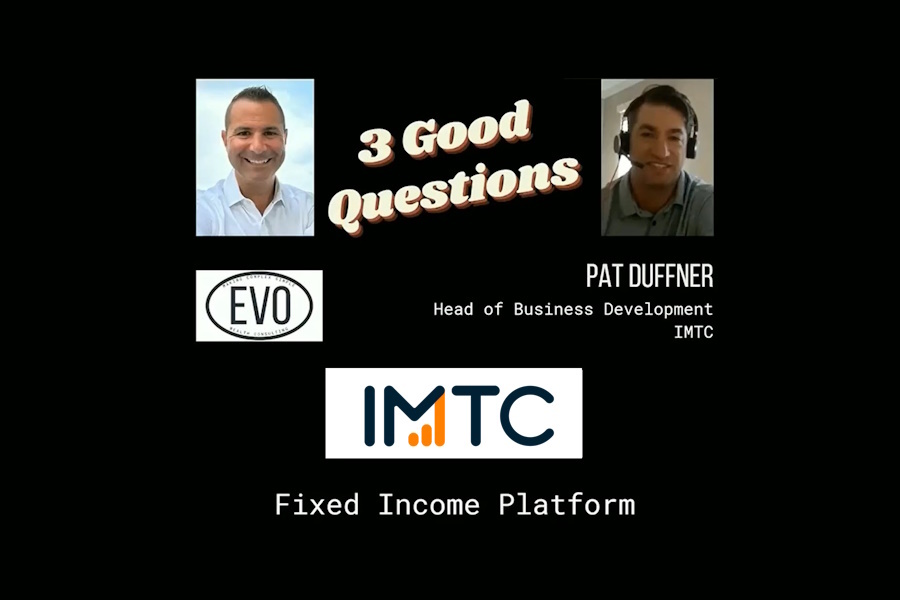The Future of Fixed Income Technology: Technology is Changing the Status Quo

When fixed income portfolio managers start their workday they are probably not thinking, “I can’t work well without a strong technology platform.” Their thoughts are more along the lines of, “I need to analyze the effect of market moves on clients’ portfolios, figure out the best way to allocate a new issue across accounts, adjust duration and reweight sectors,” and so on.
The reality is, in today’s world, these things are all related. Technology makes it possible for fixed income managers to analyze portfolios, allocate new issues, and provide value-added services to clients in a way that allows their firms to stay competitive and profitable.
Fixed income management needs innovation
Traditional technology tools used to manage fixed income portfolios are giving way to new approaches. Legacy platforms that rely on outdated system architectures and development practices are cumbersome and inflexible – their processes require too many manual steps and take too long compared to how modern technology simplifies and automates critical activities.
Fixed income asset managers that have not embraced new technology platforms are missing out on opportunities and are most likely making costly mistakes. With competitive pressures increasing and fees under pressure, portfolio managers need to be able to do more, and do it faster.
“The reality is, firms that are still relying on Excel to manage fixed income portfolios won’t be around in five years.” – Russell Feldman, COO, IMTC
Bottom line: The key to being efficient and profitable in fixed income portfolio management is technology – without it, firms cannot compete. Today’s technology allows firms to handle tasks much faster and more accurately than manual or spreadsheet-based processes.
4 issues driving fixed income asset and wealth managers to invest in new technology
1. Competition, consolidation, and fee compression
Firms are looking to stay profitable by increasing assets under management and achieving economies of scale, leading to consolidation within the industry. But increasing AUM does not provide meaningful economies of scale if expenses increase at the same pace. Fixed income managers must create a cost structure that is compatible with today’s low-fee environment.
2. The pressure from passives
ETFs (and some mutual funds) have become viable, low-cost alternative to a number of fixed income offerings, including that mainstay of a manager’s services: building and maintaining traditional ladder portfolios. To compete with an ETF-based approach, some firms are now using technology to deliver laddered portfolios for as little as 10bps.
3. Slow legacy platform development
Platforms based on outdated technology struggle to support and enhance the features fixed income managers need to achieve efficiencies and customize at scale. Their development tools and internal structures are not designed for modern agile software development cycles. A platform provider that invests in new technology will keep innovating, as legacy providers fall behind, seeking to get by with old technology and minimal investment.
4. A lack of truly fixed income-oriented technology
There has been a great deal of upheaval and change in the portfolio management platform vendor landscape over the past decade. Fixed income managers need a platform built for fixed income, not a system designed for equities that has been retrofitted for fixed income investments. The needs of equity portfolio managers do not mesh with the fixed income arena – fixed income managers need a platform that has fixed income in its DNA.
What outcomes should your firm expect from technology investments?
Asset growth with improved profitability
Cost-cutting can only go so far. To stay profitable in today’s low-fee environment, firms want to increase AUM – which often means lowering account minimums – without increasing costs to the same extent. That means doing more with the same number of employees. Technology streamlines workflow, replacing manual tasks that are necessary but are not the best use of a portfolio manager’s time.
Automating time-consuming tasks with well-designed technology gives managers more time to allocate to client-centric activities such as assessing portfolio positioning and analyzing risk/return trade-offs. Their expertise is not required to keep track of cash across accounts, compute sector weights, or go back and forth between screens and spreadsheets to make trade allocation decisions. When done manually, such tasks take too much time and create barriers to growing a profitable business.
New products and new strategies
The right fixed income technology platform helps active managers to develop and manage new products and strategies. For example, a platform that allows a firm to incorporate its own data could be used to create new active strategies that emphasize a firm’s particular expertise, or respond to evolving investor preferences (e.g., strategies that emphasize specific aspects of ESG, along with duration, sector weights, and other risk factors). Many firms are also expanding into SMA management, model portfolios, and composites to compete more effectively with other investment managers.
By reducing the time, effort, and opportunity for error involved in performing mundane tasks manually, technology gives managers more time to do the things they do best. Since active management can cost up to eight times more than passive, technology can be the difference between running a profitable business and having to cut costs to the bone.
Customization at scale
According to a recent survey by Accenture, 80% of asset managers believe ‘customization for the masses’ will be an important investment strategy in the coming years. Why? Because, as it becomes more difficult to generate alpha, personalization allows active managers to offer an appealing alternative to low-cost beta investing. This is especially true in fixed income, as there are many compelling reasons not to passively track a market-based benchmark.
Given the relentless pressure on fees, fixed income managers must differentiate their offerings to provide real value to clients. Customization is a great way to do that but delivering custom solutions at scale is only feasible with a technology platform that can automate processes in a way that truly captures how fixed income portfolio management works. Remember those ladder portfolios that technology can help to automate? With the right platform, optimizing ladders (or other structures) for each client can take what had been a manual process and literally make it 100x faster.
Winning more business
Differentiating a firm’s capabilities from the competition is essential to winning new clients, and a strong fixed income technology platform can play an integral role in this effort. Assume your firm is competing for a new client and uses a technology platform to do the following:
- model the prospective client’s CUSIP-level holdings to offer new insights;
- select targets for the portfolio’s duration, credit exposures, and other metrics;
- choose a relevant benchmark for comparisons;
- use actual broker inventories to suggest ways to optimize the portfolio that are truly executable;
- incorporate tax-loss harvesting into the analysis;
- demonstrate that the optimized portfolio conforms to investment policy guidelines.
Consider the prospective client who is selecting a new manager. One firm does everything outlined above. The others on the short-list only describe how they would, in theory, manage the portfolio but cannot show in detail what the result would be. Which firm gives the client more confidence?
Many fixed income firms have been stuck in the past because of a lack of innovation in technology. However, the new status quo means firms that are streamlining and automating their workflows will be the ones to thrive in the future. Firms need to consider the objectives of investing in technology to ensure it aligns with the goals of the firm. However, what are the biggest considerations to assess when it comes time to assess vendors? In Part 2 of this series, we discuss what fixed income asset managers need to know about modern technology platforms and how the solutions they offer allow firms to stay competitive.
Read the full guide on The Future of Fixed Income Technology for more insights on this topic.
.





